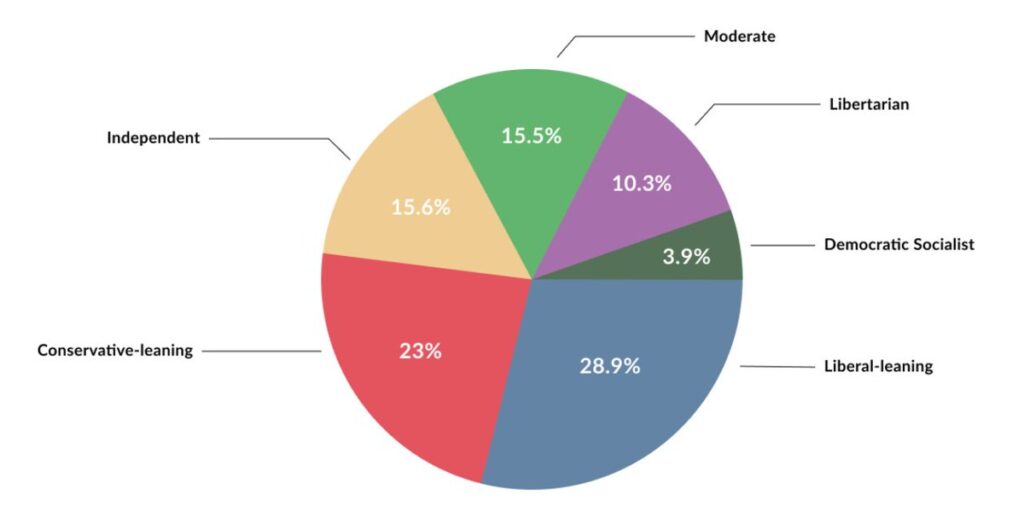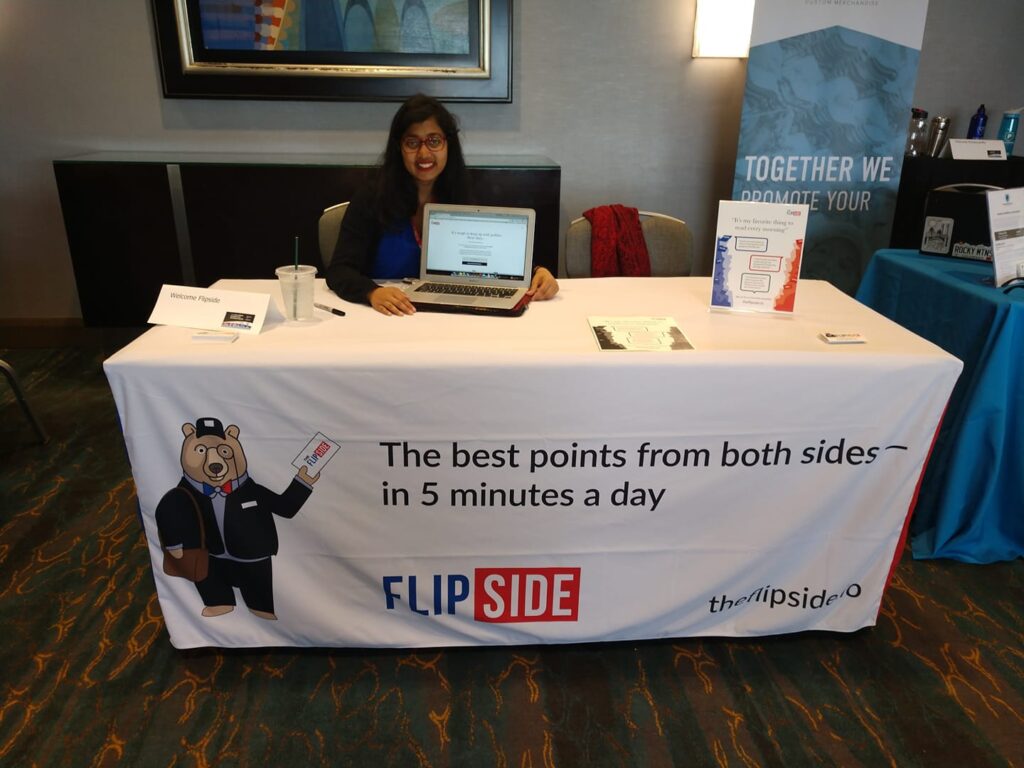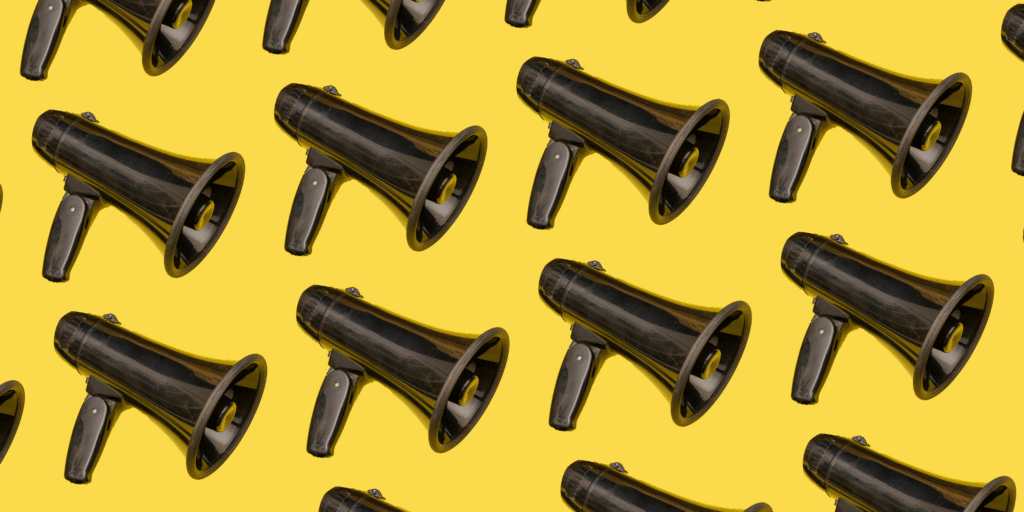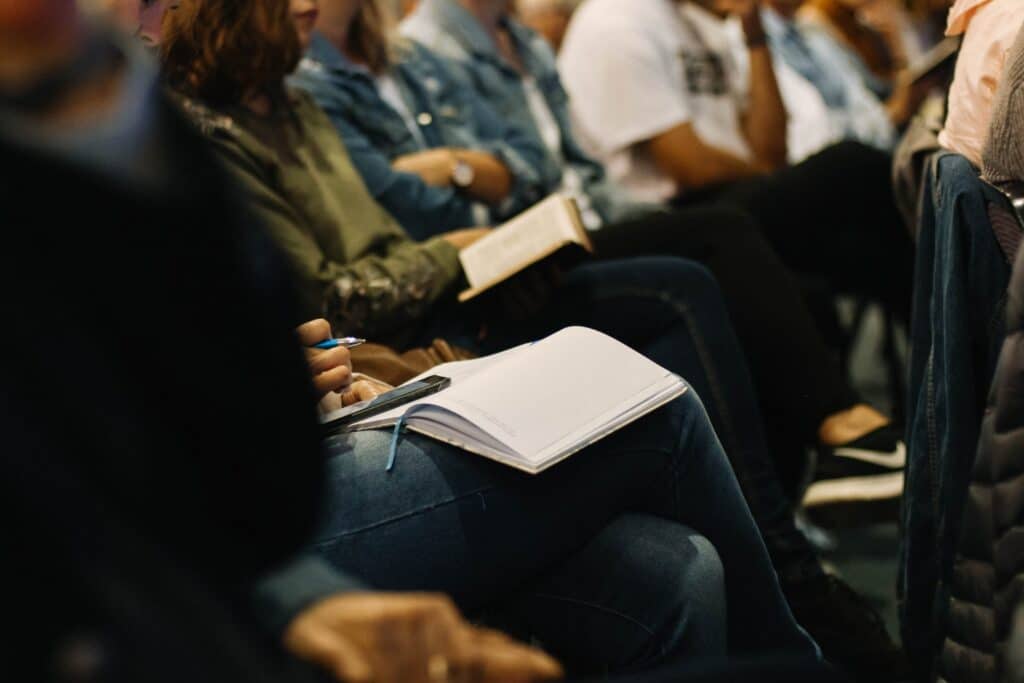
Editor’s Note: The American Press Institute is helping news organizations reimagine local opinion journalism to promote healthier civic discourse and to better understand its role in news business sustainability. This essay by Annafi Wahed, co-founder and CEO of The Flip Side, is part of a series of essays on the topic, and explores the fundraising and audience revenue opportunity local media have in spelling out an opinion-minded product’s goals.
Local news organizations are faced with several challenges when it comes to informing discussion about important issues, standing out amid information overload and, of course, finding financial support for their work. Polarization only makes this harder, including for local opinion journalism. At the national level, we are finding that being clear about your aims — and thoughtfully building a product to help with that — can lead to direct financial support from your community.
The Flip Side, which I co-founded, has a clear mission: to reduce polarization by bridging the gap between liberals and conservatives. Every day, our editorial team combs through dozens of sources — left, right and center. We focus on one topic and select the most thoughtful and well-articulated op-eds and commentary to highlight in a five-minute curated email. Facebook and Twitter show you the worst of both sides; we show you the best.
The growth of our start-up newsletter itself showed the mission resonated; over 50,000 of our subscribers came via word of mouth and referral. And while our newsletter is already making a tangible difference in people’s lives — helping them understand and connect with family, friends or coworkers with whom they disagree — we always knew it was just the first step. We’ve spent the past year researching and speaking with engineers, designers, academics and community moderators about how best to design an online community where meaningful discussions can take place.
We just launched a new online discussion platform that uses human-centered design and a custom ranking algorithm to reward thoughtfulness and bipartisanship, rather than trolling or clickbait. We were fortunate to have raised a pre-seed round from an angel investor in 2020, and are generating revenue from both premium subscriptions and ad sales. Still, we’re not quite at break even and — like some resource-strapped opinion sections may find themselves — need to pursue additional funding to pursue our important work.
Whether national or local, large potential backers of new ideas often bring their own interests to the table. We met with several venture capital firms in Q2 and Q3 2022, when they were at the height of their mania. They advised us to put our newsletter on the blockchain, to create NFTs of our mascot, to build in the metaverse. One venture capitalist suggested we create a dating app that would match users according to their reading habits. The idea of creating a healthy online community for political and civic discourse was not sexy enough; they wanted novelty.
The nonstop news cycle keeps us plenty busy; we had no desire for side quests. And so we turned to crowdfunding, betting that our mission would resonate with many people in and outside our current audience. We raised $267,453 via Wefunder (which allows non-accredited investors to invest), and an additional $125,000 from two angel investors (both of whom are longtime subscribers; as was our pre-seed investor). The comments from our Wefunder investors speak to the same thing as the dollars do: people wanted to support the vision we laid out for a less polarized America.
In addition to having a strong, clear mission, here are some other things we did that helped us fundraise from our audience:
- We are clear about where we’re coming from. I’m upfront about my liberal bias; my co-founder is upfront about his conservative bias. Our commitment to bipartisanship (or more accurately, equal partisanship) engenders a lot of trust and credibility.
- A study of Wikipedia articles showed that politically diverse teams produce higher-quality work than articles edited by moderate or one-sided teams.
- Websites with more extreme and less politically diverse audiences have lower journalistic standards; some propose using the political diversity of a website’s audience as a quality signal. Here’s our audience breakdown:

- We’re specific about what we’re building (and what the audience is supporting). Many people talk a big game about building a healthy community; few actively design for it. Our pitch deck outlines specifically how our new platform is different from Facebook, Twitter and the comment sections of most media outlets. The structure is also focused and predictable, unlike perhaps some opinion sections:
- We focus on one topic a day and begin with a summary of liberal and conservative viewpoints both sides can trust.
- We have a bipartisan team of moderators, and make all moderator actions public.
- Instead of a “like” button, we have: “Helpful/Unhelpful” and “Agree/Disagree.” We weight the “Helpful” + “Disagree” vote combination most heavily, as it’s a strong indicator of a well-written post.
- Our algorithm prioritizes cross-partisan engagement over other metrics. For example, a post with three “Helpful” votes from left-leaning users and five “Helpful” votes from right-leaning users is ranked higher than a post with 10 “Helpful” votes all from left-leaning users.
- We’re planning to launch an “Ambassador of the week” badge, which will be awarded to the user who receives the most “Helpful” votes from the opposing side in a given week.
- We tied our fundraising appeals to real-time events. I began one email with this paragraph: “Each time I sat down to write this letter in the past two weeks, there had been a new development in the world of social media. Elon Musk is (probably) buying Twitter after all. Ye, formerly known as Kanye West, is buying Parler. Meta is… making legs. A ‘vibe shift’ is underway. Meanwhile, the chaos that is the midterm election cycle continues unabated.”
- We launched a ‘minimum viable product’ and would refine it with audience input. We didn’t wait for perfection to get going. With an MVP live by Q4 2022, we were getting real-time feedback. When someone had questions about our roadmap, we could point to real use cases that had already come up. For example, we have users who like to write long posts, and others telling us they felt overwhelmed by the volume. So we added a nudge that asks folks to write a TL;DR version at the top of their post if it’s over a certain number of characters. We also added image upload capability for user profiles because multiple people asked for it. Moving from theory to practice, even with a clunky user journey, can show investors what you’re capable of.
- People like giving feedback as you pursue a mission they value. We gave examples of new features under consideration, and let our audience know that joining the community fundraising round means they get to help shape our next phase: “Would you like your own private ‘library’ in our forum where you’ll be able to save articles and posts to come back to later? Should we launch monthly salons where we bring together thought leaders with diverse perspectives to share their knowledge and expertise? Expand our Deep Dives?… We’re in the earliest stages of a new and exciting journey, and want YOU to become an owner and help shape the trajectory.”
Even after all this, we still have a ways to go to reach our $1 million fundraising goal for this year. Here are the objections we have to overcome:
- “Do people actually want a balanced view?”
- Not even 237,000+ newsletter subscribers and thousands of rave reviews are enough to convince the skeptics. In a recent poll, asked who’s driving polarization, respondents were four times as likely to blame “political and social elites” (61%) than “how ordinary Americans think and behave” (15%). The enthusiasm of our audience vs. the skepticism of the investor class bears this out.
- “You’re creating a false equivalency.”
- Even though we do not give a platform to misinformation or conspiracy theories, our equally partisan format is unfortunately a hindrance for some investors. In cases like this, I do my best to remind them that in a democracy, everyone gets a vote. If we want to continue living in a democracy, we have to learn to coexist with even the people we are concerned about. If we want our preferred policies to win the day, we have to persuade at least some of them.
- “The best minds in Silicon Valley haven’t been able to solve the problems of echo chambers and growing polarization. What makes you think you can?”
- I explain that content curation, moderation and community building are fundamentally about social and political sensibilities first, and tech stack second. As Nilay Patel wrote, “the problems with Twitter are not engineering problems. They are political problems.” Local media have opportunity here, too.
“It’s easier to imagine colonizing Mars than it is to imagine building new forms of public infrastructure,” Eli Pariser said on Ezra Klein’s podcast last year. Well, a Mars mission is years away at best. And our virtual reality worlds are still ghost towns. More importantly though, it’s very likely that our earthly problems will follow us to both outer space and cyberspace. Try as we might, we cannot run away from our tribal, political selves.
There are innumerable books, articles, think tanks, speeches and studies analyzing the sorry state of our socio-political discourse, but comparatively few groups working on viable, scalable solutions — or local idiosyncratic ones. Of course it’s important to understand and analyze our problems and their causes, from the destabilizing effects of globalization to primetime “news” provocateurs and pernicious big tech algorithms, but we are at a point of diminishing returns.
When we talk to our subscribers and those who chose to invest, we hear the same thing again and again: “Thank you for actually doing something about the problem.” (In the hundred-plus interviews we conducted, not a single person mentioned the blockchain, NFTs or the metaverse.) News audiences across the nation are hungry for builders and doers. They want to support problem solvers and solutions. The more concrete we can be about what their financial support means in terms of being able to build products/services/verticals and make an impact, the likelier they are to support our work. Let’s build things worthy of their support.
Annafi Wahed is the co-founder and CEO of TheFlipSide.io, a media startup building the next generation platform for news and civic dialogue.
Share with your network
Read these voices on reimagining local opinion journalism
You also might be interested in:
As the American Press Institute marks 80 years, we’ll honor our legacy by continuing to respond to the evolving needs of news leaders. Our upcoming API Local News Summits will explore three critical places where democracy and sustainability intersect.
Reaching younger audiences has long been a challenge for media organizations. As platforms evolve, trust in news shifts and news avoidance grows, it can feel especially difficult to connect with and serve multigenerational audiences in an authentic and sustainable way. How can news leaders do their part to represent and include community perspectives from members of different age groups?
For us, we knew one of our biggest hurdles to success would be challenging the assumptions, both spoken and unspoken, we held for others. Here’s what we’ve learned over the past three years of gathering multigenerational problem-solvers.








